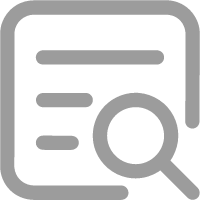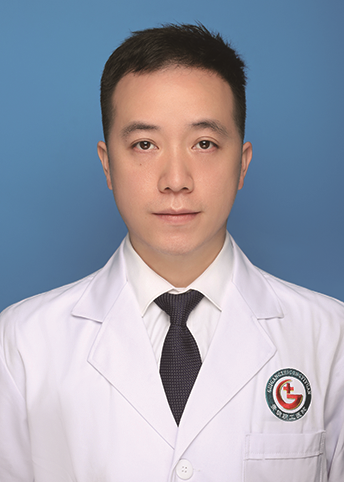A randomized controlled trial on the effect of early eschar dermabrasion combined with antimicrobial soft silicone foam dressing in the treatment of deep partial-thickness burn wounds in children
-
摘要:
目的 探讨早期磨痂联合自粘性软聚硅酮银离子泡沫敷料(以下称为泡沫敷料)治疗儿童深Ⅱ度烧伤创面的效果。 方法 该研究为随机对照试验。2021年6月—2022年12月,贵阳钢厂职工医院烧伤科收治78例符合入选标准的深Ⅱ度烧伤患儿。按照随机数字表法将患儿分为2组,剔除1例随访脱落患儿后,联合治疗组纳入38例患儿[男20例、女18例,年龄26.00(16.75,39.75)个月],泡沫敷料组纳入39例患儿[男21例、女18例,年龄19.00(14.00,31.00)个月]。对联合治疗组患儿在伤后48 h内行创面磨痂术,术后用泡沫敷料覆盖创面,7 d更换1次敷料;对泡沫敷料组患儿在伤后48 h内行创面消毒后用泡沫敷料覆盖创面,2~3 d更换1次敷料。2组患儿创面愈合后均常规涂抹硅酮凝胶,每天涂抹2次,连续应用3周后佩戴弹力套,每天佩戴18 h以上,连续佩戴6个月以上。采用儿童疼痛行为量表FLACC评估患儿换药时疼痛程度;观察并记录治疗期间的不良反应、换药次数及创面愈合时间;创面愈合后6个月,采用温哥华瘢痕量表(VSS)评估创面瘢痕情况。 结果 换药时,联合治疗组患儿疼痛的FLACC评分为3.5(2.0,5.0)分,明显低于泡沫敷料组的6.0(5.0,8.0)分( Z=-5.40, P<0.05)。2组患儿治疗期间均未发生创面水肿、积液或周边皮肤皮疹过敏等不良反应。联合治疗组患儿的换药次数为3(3,4)次,明显少于泡沫敷料组的8(7,10)次( Z=-7.58, P<0.05)。联合治疗组患儿的创面愈合时间为(19±5)d,明显短于泡沫敷料组的(25±6)d( t=-4.48, P<0.05)。创面愈合后6个月,联合治疗组患儿瘢痕的VSS评分为5(2,8)分,明显低于泡沫敷料组的7(5,10)分( Z=-3.05, P<0.05)。 结论 与单纯使用泡沫敷料相比,早期磨痂联合泡沫敷料治疗深Ⅱ度烧伤患儿可减少换药次数、减轻换药痛苦、缩短创面愈合时间,结合后期抗瘢痕治疗能够有效减轻瘢痕增生。 Abstract:Objective To explore the effect of early eschar dermabrasion combined with antimicrobial soft silicone foam dressing (hereinafter referred to as foam dressing) in treating the deep partial-thickness burn wounds in children. Methods This study was a randomized controlled trial. From June 2021 to December 2022, 78 pediatric patients with deep partial-thickness burns who met the inclusion criteria were admitted to the Department of Burns in Guiyang Steel Plant Employees Hospital. According to the random number table, the pediatric patients were divided into two groups, with 38 cases left in combined treatment group (with 20 males and 18 females, aged 26.00 (16.75, 39.75) months) and 39 cases in foam dressing group (with 21 males and 18 females, aged 19.00 (14.00, 31.00) months) after the exclusion of one dropped-out child in follow-up. The pediatric patients in combined treatment group underwent eschar dermabrasion of the wound within 48 hours after injury, the wound was covered with foam dressing after operation, and the dressing was replaced once every 7 days; for the pediatric patients in foam dressing group, the wound was sterilized within 48 hours after injury and covered with foam dressing, and the dressing was replaced once every 2 to 3 days. After the wound healing, the children in both groups were routinely applied with silicone gel twice a day for 3 weeks before started wearing elastic sleeves for more than 18 hours a day, and continuously for over than 6 months. The degree of pain during dressing change was evaluated using the children's pain behavior inventory FLACC. The adverse reactions during the treatment period, number of dressing changes, and wound healing time were observed and recorded. Six months after wound healing, the Vancouver scar scale (VSS) was used to evaluate the condition of the wound scar. Results When changing dressing, the FLACC score for pain of pediatric patients in combined treatment group was 3.5 (2.0, 5.0), which was significantly lower than 6.0 (5.0, 8.0) in foam dressing group ( Z=-5.40, P<0.05). During the treatment period, no adverse reactions such as wound edema, fluid accumulation, or peripheral skin rash allergies occurred in any pediatric patient in both groups. The number of dressing changes of pediatric patients in combined treatment group was 3 (3, 4) times, which was significantly less than 8 (7, 10) times in foam dressing group ( Z=-7.58, P<0.05). The wound healing time of pediatric patients in combined treatment group was (19±5) days, which was significantly shorter than (25±6) days in foam dressing group ( t=-4.48, P<0.05). Six months after wound healing, the VSS score for scar of pediatric patients in combined treatment group was 5 (2, 8), which was significantly lower than 7 (5, 10) in foam dressing group ( Z=-3.05, P<0.05). Conclusions Compared with using foam dressings alone, early eschar dermabrasion combined with foam dressings can reduce the number of dressing changes, alleviate the pain during dressing changes, and shorten the wound healing time in treating children with deep partial-thickness burns, and effectively alleviate scar hyperplasia by combining with anti-scar treatment post burns. -
Key words:
- Burns /
- Child /
- Cicatrix /
- Eschar dermabrasion /
- Wound repair /
- Antimicrobial soft silicone foam dressing
-
(1)重点阐述了瘢痕整复设计的基本原则,提出应当积极稳妥规范开展瘢痕整复相关新技术,并重视整复后随访和评估工作。
(2)针对人工智能、三维生物打印、基础研究成果转化等瘢痕整复领域未来研究方向提出了建议。
Highlights:
(1)Basic principles of scar reconstruction design were emphasized and it was proposed that the new technologies related to scar reconstruction should be developed actively and steadily in a standardized manner, with emphasis on the follow-up and evaluation work after reconstruction.
(2)Suggestions were put forward for future research directions in the field of scar reconstruction, such as artificial intelligence, three-dimensional bioprinting, and translation of basic research achievements.
瘢痕是组织遭受损伤后不能完全再生,进而在组织不完全性修复中形成的,能引起机体功能及外观改变的结缔组织。皮肤是体表的最外层,发挥着重要的屏障功能,同时也容易因外界因素而受损。根据最近的一项大型跨国网络调查,48.5%的受访者表示自己至少有1处皮肤瘢痕,且这些瘢痕中约22%为最近1年新发 [ 1] 。国内最近一项基于住院瘢痕患者的全国性数据调查显示,瘢痕并发挛缩、畸形、感染等概率高,烧伤是造成瘢痕的主要病因 [ 2] 。皮肤瘢痕的整复是烧伤与整形外科最主要的工作之一,但也面临着患者情况多样、治疗手段复杂、效果不尽如人意等诸多挑战。随着生活水平的不断提高,广大患者对瘢痕整复的期望越来越高,因此如何不断提高瘢痕整复效果是值得思考和研究的。
1. 精心设计瘢痕整复方案
整复方案设计是实施瘢痕整复前的关键一步,决定着整复成败和效果好坏。每例瘢痕患者的病情都有其自身特点,必须高度重视整复方案设计问题,应当在充分评估和沟通的基础上,结合医师能力实际,制订出对患者而言最有利的方案。
1.1 总体原则
1.1.1 全面评估患者情况
主要从瘢痕情况和全身情况2个方面进行。除详细了解瘢痕的病因、部位、面积、形状、数量、类型、合并症等情况外,还应使用瘢痕评估量表对瘢痕整体情况进行全面评估。目前,临床常用的瘢痕评估量表/方法是温哥华瘢痕量表、视觉模拟评分法和患者与观察者瘢痕评估量表 [ 3] 。为了在治疗前后对瘢痕有较为客观的比较,须对患处拍摄标准化照片。此外,随着技术的进步,三维摄影作为评估瘢痕的手段也显示出良好的可靠性和客观性 [ 4] 。患者全身情况也是评估内容的重要方面,重点在于评估患者营养状况、精神心理状态、慢性病情况、皮肤疾病情况等;需要手术治疗的,还应特别关注有无手术禁忌证。
1.1.2 主要依据瘢痕类型确定整复方案
不同类型的瘢痕,整复方案差异较大。本课题组认为,瘢痕类型是决定瘢痕整复方法的主要因素,主要应从瘢痕形状、面积、成熟情况等方面考虑。对于表浅性瘢痕,可用皮肤磨削术和激光治疗;线状或小面积片状的增生性瘢痕的治疗通常首先使用非手术方法,例如外用硅凝胶产品、压力治疗和激光治疗;如果线状或小面积片状的增生性瘢痕持续增生,还可向瘢痕内注射糖皮质激素。对于大面积片状增生性瘢痕,特别是严重挛缩和造成局部畸形的瘢痕,待其稳定成熟后,应果断采用各类皮片、皮瓣移植手术进行整复。对于小范围凹陷性瘢痕,可行切除缝合、注射填充、激光治疗;广泛的凹陷性瘢痕需手术治疗,具体方式要根据凹陷和畸形程度决定。瘢痕疙瘩是一类特殊的瘢痕,特征是无自愈趋势且面积越来越大,应以手术切除病变、瘢痕内药物注射和放射治疗为主要方法,施行动态综合疗法,并加强随访以预防复发 [ 5] 。如瘢痕出现溃疡,一般无须等待创面完全愈合而应尽早进行瘢痕切除手术。
1.1.3 注意不同部位差异
不同部位瘢痕整复的主要关注点不同,设计时应“因地制宜”。头面部是外露部位,对美学效果要求高,应注意按亚单位进行整复,应用皮肤软组织扩张术整复后美学效果好 [ 6] 。颈部瘢痕挛缩严重影响颈部外观及功能,宜采用颈横动脉颈段皮支扩张皮瓣等胸前区扩张皮瓣予以整复;对于无扩张条件者,则采用皮片移植整复 [ 7] 。躯干部皮肤面积较广、移动度大,且日常生活中多被衣物遮盖,因此采用局部皮瓣整复躯干小面积瘢痕,多可获得较为满意的效果 [ 8] 。四肢瘢痕整复的重点是解除挛缩畸形以恢复运动功能,常用的手术方法包括“Z”成形术、皮片移植术、皮瓣移植术等。会阴区瘢痕常常伴有严重挛缩,如果会阴区周围有可供利用的正常皮肤,进行局部皮瓣+游离皮片移植的效果优于单纯游离皮片移植;在轴型皮瓣整复会阴瘢痕的应用中,可选用髂腰部皮瓣,此皮瓣旋转弧度大、修复面积广,术后效果好 [ 9] 。
1.1.4 充分尊重患者意愿
不同瘢痕患者情况和诉求各异,医师应当耐心倾听、仔细询问、全面评估,充分尊重并考虑患者意愿,切不可为了追求提高个人技术或受经济利益驱使而劝说患者采取某种特定整复方式。瘢痕形成时间长者,经过长期生活,心理上逐渐接受,通常预期较为合理,往往要求稍加改善即可;对于瘢痕形成时间短者,如其心理压力较大且瘢痕尚未成熟,应适当推迟手术整复;对于瘢痕牵拉周围组织器官导致功能障碍者,特别是儿童患者,应当尽早通过手术松解;对于期望过高或期望不合理者,整复治疗前应当反复沟通、慎之又慎。
1.1.5 综合考虑费效比
在保证疗效的前提下,瘢痕整复方案设计应当先简再繁、先单一再联合。应当避免“大处方、大联合”,综合考虑患者经济承受能力和期望效果,尽量降低整复方案的费效比。目前,国外学者对瘢痕整复领域的卫生经济学问题已进行了探索。McPhail等 [ 10] 认为,在患者获益程度相似的情况下,单用硅凝胶制剂的花费低于压力疗法或二者联合;另一项涉及脉冲染料激光干预早期瘢痕形成的成本效益分析研究正在计划开展中 [ 11] 。如何在不显著增加患者费用负担的情况下,进一步提高瘢痕治疗效果,是未来努力方向。
1.2 手术治疗原则
1.2.1 把握合适时机
通常认为,对于经过12个月或更长时间的保守治疗无效的瘢痕,可采用手术切除 [ 3, 12] 。这主要是考虑到瘢痕成熟后再手术时,层次清楚,术中出血少,术后发生瘢痕再次增生的概率也相对较小 [ 13] 。但有的瘢痕形成1年余还明显充血发红,此时也不宜手术;而对于影响生长发育、导致严重功能障碍或长期糜烂的瘢痕,应尽早手术。因此,应当综合判断分析后决定手术时机,不可教条呆板。
1.2.2 方法尽量简便
在保证整复效果前提下,尽量选择简便的方法。能直接切除缝合者,就不用移植皮瓣或者皮片;能用局部皮瓣、邻位皮瓣修复者,就不应该移植皮片、远位皮瓣或者游离皮瓣;单纯皮片移植就能够达到功能恢复目的者,就不要移植远位皮瓣或游离皮瓣等 [ 13] 。
1.2.3 减少额外损伤
开展任何手术都需要关注手术损伤问题,瘢痕整复手术也不例外。首先,需要减少供区的损伤和继发畸形。在皮片移植术中,可采用厚中厚皮替代全厚皮进行瘢痕切除后创面修复,为供区保留一定真皮组织。皮肤扩张术的供区通常能直接缝合,一般不继发畸形和功能障碍,因此皮肤扩张术是减少供区损伤的有效方法 [ 14, 15] 。此外,应用真皮替代物能减少创面愈合过程中异常瘢痕的形成,同时有效降低瘢痕切除修复术后病理性瘢痕的发生率 [ 16] 。其次是减少受区损伤,主要通过术前选择合适的体位、切口位置以及手术器材,术中操作轻柔、注意层次、严格无菌。
1.2.4 提前预防并发症
在整复方案设计之初就应该考虑并发症预防问题,重视并发症危险因素的评估和识别,提前做好预防措施 [ 17] 。应注意观察供区和受区皮肤有无破损、炎症或者感染情况;注意明确术区重要神经和血管分布情况,防止整复后神经、血管损伤或肢端血运障碍;完善各项常规和特殊的检查检验,详细询问并了解患者既往史和家族史,特别是前期治疗经过。
1.3 非手术治疗原则
非手术治疗是瘢痕早期预防的重要手段和瘢痕手术治疗后的必要补充,应当落实“早期”“联合”“全程”的基本原则。“早期”是指应树立创面愈合期就开始预防瘢痕的理念,在创面愈合的不同阶段予以合适的处理,维护创面愈合正常程序,从而从源头控制瘢痕 [ 18] ;创面愈合后即可干预瘢痕形成,越早干预,效果可能越理想。“联合”是指由于目前尚没有消除瘢痕的特效方法,非手术治疗需配合手术治疗共同或序贯施行,才能达到较佳的瘢痕整复效果。“全程”则是指非手术治疗通常不是一蹴而就的,需要在一定时间段内多次或持续使用。以目前较为推荐的脉冲染料激光+剥脱性点阵二氧化碳激光序贯治疗为例,通常是在创面愈合后1周即可开始使用脉冲染料激光,每月1次;当瘢痕充血程度明显减轻后,开始使用剥脱性点阵二氧化碳激光,每3个月1次 [ 19] 。
2. 积极稳妥规范开展瘢痕整复新技术
2.1 积极开展,持续研究
瘢痕整复领域新技术层出不穷,近年来研究较多的是脂肪注射、肉毒毒素注射和光电治疗 [ 20] 。Kwon等 [ 21] 进行双盲对照试验后认为,从脂肪组织中提取的血管基质组分能有效抑制瘢痕形成。Disphanurat等 [ 22] 的研究表明,向隆胸术切口皮下注射A型肉毒毒素,可明显降低瘢痕宽度和高度。Kim等 [ 23] 观察到,使用基于830 nm发光二极管设备的光生物调节疗法可有效促进甲状腺手术切口愈合,并能防止瘢痕增生,且没有明显不良反应。此外,硅胶棒、曲安奈德溶解微针贴片、点阵微针射频等方法也在瘢痕治疗的临床试验中显示了较好疗效,值得推广应用 [ 24, 25, 26] 。这些治疗和预防瘢痕的新技术应用已愈加广泛和成熟,需对其加强经验总结,不断优化细节,并持续拓展相关研究。
2.2 稳妥开展,尊重实际
应用上述新技术时,也应当基于医患双方实际,不可盲目急躁跟风。首先需把握好各项技术的适应证,选择合适的施治对象;其次要熟知技术原理,熟练掌握基本操作,熟悉并发症处置,真正做到理论指导实践;还应立足本人及本单位实际,优先掌握常规方法,以常规方法为基础,注意新技术与常规技术的相互配合。
2.3 遵章开展,建立规范
瘢痕整复新技术的开展离不开相关制度规范的保驾护航。医师需加强对新技术标准规范的学习,严格遵守操作规程,谨记“无菌、无创、无无效腔、无创面外露”的整形外科基本原则。所在单位要加强新技术开展的把关,严格按照临床新技术开展的有关规定进行审批和监管。此外,本课题组呼吁制订更多权威性高、科学性好、操作性强的瘢痕整复技术教程,供广大基层医师学习参考。
3. 重视瘢痕整复后随访和评估工作
3.1 做好长期随访工作
坚持长期随访对所有研究者而言都是艰巨的挑战,主要原因是重视程度不够、患者依从性参差不齐、随访制度和手段缺乏等。本课题组认为,要想持续做好随访工作,必须要增强随访意识,认识到坚持长期随访对远期治疗效果评判的重要意义;应当加强患者教育,积极取得患者信任和配合;还需推动随访相关规范化制度和操作流程的制订工作。本课题组曾对355例经皮肤扩张术修复面颈部病损的患者(绝大部分为瘢痕患者)进行了随访观察,随访时间最长达10年,这项工作虽然工作量巨大,但对于总结经验、提高技术、改进细节大有裨益 [ 27] 。
3.2 注重客观评估方法的应用
目前,常常通过主观性的评分或量表评估瘢痕治疗效果,在一定程度上能够反映医患双方对治疗效果的评价,但不足之处在于评价标准不统一、且不便于不同研究之间相互比较。因此,本课题组更加推荐客观评估方法的应用,可从皮肤的感觉功能,皮瓣/皮片回缩率、弹性、颜色,瘢痕宽度、体积等方面进行评估 [ 28] 。还可从触觉、温度觉、痛觉、两点辨别觉等维度测量感觉功能;使用皮肤诊疗系统和肤质诊断专家系统,还可实现回缩率、弹性、颜色、瘢痕体积等的精确测量。
3.3 应用病例管理数据库
在随访评估和临床科研中,病例的丰富性与病例数据收集整理不完善之间的矛盾十分突出,建议利用数据库技术对瘢痕整复患者临床资料进行管理。可以建立小型专题数据库,也可以依托大型专业病例数据库,还可以利用医院现有病历系统进行资料管理。本课题组的经验是,通过Access数据库软件构建专病数据库,即可达到预期的数据管理效果 [ 29] 。好的专病数据库的建立不是一朝一夕之功,需要临床专家和信息工程师密切合作,需要不断提高模式化水平、维护数据完整性,还可能需要多家单位、多个中心的相互协作。
4. 对瘢痕整复未来方向的展望
虽然到目前为止,尚无完全预防和根治瘢痕的方法,但随着整形外科手术技术的日臻成熟,特别是皮肤软组织扩张术的开展应用,瘢痕整复的效果愈加令人满意。本课题组认为,未来瘢痕整复领域的发展方向仍是以外科手术为基础的综合治疗,重点应关注以下几个方面。
4.1 关注人工智能在瘢痕整复领域的潜在应用
随着人工智能的蓬勃发展,该技术被逐渐应用于医学领域,例如放射学、病理学、眼科学和皮肤科学领域等 [ 30] 。在瘢痕整复领域,人工智能已被用于提高瘢痕疙瘩诊疗决策的精准性 [ 31] 。本课题组认为,人工智能很有可能在瘢痕整复手术设计、术中规划、治疗后评估等多个方面具有应有价值。值得强调的是,瘢痕整复的对象毕竟不是冰冷的机器,因此人工智能的职能定位始终应当是辅助者,而不是替代者。
4.2 重视用三维生物打印技术开发皮肤替代品
三维生物打印是通过逐层打印生物功能材料及其支持成分,以创建具有所需三维细胞结构和功能的复杂活组织和器官的一种计算机辅助技术,是目前皮肤再生领域的前沿研究热点 [ 32] 。目前三维生物打印的皮肤替代品已经初步制作成功,具有少量正常皮肤功能 [ 33] 。需要进行瘢痕整复的患者本质特征是体表正常皮肤的缺失,如能用三维生物打印技术制造出功能和美学修复效果兼备,且成本可接受的皮肤替代品,必将为瘢痕患者带来福音。
4.3 加强瘢痕领域基础研究成果向临床应用转化
随着单细胞测序、类器官、免疫学技术等的进步和应用,研究者对于瘢痕形成机制的认知也愈加深入。基于瘢痕发生发展的分子机制,一些特异性治疗靶点正在被逐步开发,例如抗瘢痕内异常炎症、抗瘢痕内血管生成、向瘢痕内移植自体干细胞等 [ 34] 。但也应当注意到,还有许多瘢痕研究仅仅停留在基础层面,并未很好向临床应用转化。应当以一张蓝图绘到底的决心,一体推进、一体筹划基础与临床研究工作,使二者相互促进、相互转化,最终实现造福瘢痕患者的美好愿望。
沈阳、贺钧:研究设计、数据采集以及论文撰写;刘竣彰、张险峰、谭杰:指导研究、修改论文、对文章的知识性内容作批评性审阅;唐文军、杨豪、陈旭、罗兴旺:数据整理、统计学分析所有作者均声明不存在利益冲突 -
参考文献
(19) [1] 林国安.小儿烧伤流行特点和早期处理[J/CD].中华损伤与修复杂志(电子版),2018,13(4):247-252.DOI: 10.3877/cma.j.issn.1673-9450.2018.04.002. [2] 刘琰,张杰.浅谈小儿深Ⅱ度烧伤创面的处理[J].中华烧伤杂志,2021,37(8):797-800.DOI: 10.3760/cma.j.cn501120-20200512-00261. [3] 中华医学会烧伤外科学分会.磨痂术在烧伤创面中的临床应用全国专家共识(2021版)[J].中华烧伤杂志,2021,37(6):501-507.DOI: 10.3760/cma.j.cn501120-20210110-00013. [4] RuanJ,XiM,XieW.Analysis of 12,661 pediatric burns in Wuhan institute of burns: a retrospective study of fifteen years[J].Burns,2021,47(8):1915-1921.DOI: 10.1016/j.burns.2021.02.021. [5] 罗高兴,孙晓艳,吴军.重视精准烧伤医学体系的建设与推广[J].中华烧伤与创面修复杂志,2023,39(7):612-617.DOI: 10.3760/cma.j.cn501225-20230407-00116. [6] 李峰,迟云飞,胡泉,等.伤后早期微创削痂治疗小儿躯干及四肢深Ⅱ度烧伤创面的效果[J].中华烧伤杂志,2018,34(10):714-718.DOI: 10.3760/cma.j.issn.1009-2587.2018.10.012. [7] 胥学冰,史昌乾,张博,等.磨痂术对大鼠浅Ⅱ°烫伤创面愈合的影响[J].武警医学院学报,2010,19(3):193-195. [8] 李学川,郇京宁,章雄,等.猪深Ⅱ度烫伤早期磨痂术后创面组织学改变及CK和EGFR表达[J].上海交通大学学报(医学版),2009,29(5):554-557. [9] ShaoH,LuoR,YouC,et al.Clinical effect of emergency dermabrasion combined with biological dressing A on wound microcirculation and preventing sepsis in deep degree-Ⅱ burns[J].Emerg Med Int,2022,2022:4730905.DOI: 10.1155/2022/4730905. [10] DissemondJ,AssenheimerB,GerberV,et al.M.O.I.S.T. concept for the local therapy of chronic wounds[J].Dtsch Med Wochenschr,2023,148(7):400-405.DOI: 10.1055/a-1987-4999. [11] 吕国忠,吴军,罗高兴,等.2021年烧伤外科学领域的十大进展[J].中华医学信息导报,2022,37(1):10.DOI: 10.3760/cma.j.issn.1000-8039.2022.01.111. [12] 顾佳 磨痂术联合水胶体敷料对大鼠深Ⅱ度烫伤创面愈合影响的实验研究 镇江 江苏大学 2021 顾佳.磨痂术联合水胶体敷料对大鼠深Ⅱ度烫伤创面愈合影响的实验研究[D].镇江:江苏大学,2021.
[13] 陈才,田文艳,寇新燕.创面磨削痂术联合外用rhGM-CSF对Ⅱ度烧伤患儿创面愈合的影响[J].中国美容医学,2023,32(7):28-31. [14] GuoZQ,QiuL,GaoY,et al.Use of porcine acellular dermal matrix following early dermabrasion reduces length of stay in extensive deep dermal burns[J].Burns,2016,42(3):598-604.DOI: 10.1016/j.burns.2015.10.018. [15] OuyangW,WangM,JinL.The effect of vacuum sealing drainage after early woundabrasion on wound healing in diabetic patients with deep second degree burn and its influence on the inflammatory response[J].Am J Transl Res,2021,13(8):9814-9819. [16] 中华医学会烧伤外科学分会.儿童深Ⅱ度烧伤创面处理专家共识(2023版)[J].中华烧伤与创面修复杂志,2023,39(10):901-910.DOI: 10.3760/cma.j.cn501225-20230730-00026. [17] DeitchEA,WheelahanTM,RoseMP,et al.Hypertrophic burn scars: analysis of variables[J].J Trauma,1983,23(10):895-898. [18] CubisonTC,PapeSA,ParkhouseN.Evidence for the link between healing time and the development of hypertrophic scars (HTS) in paediatric burns due to scald injury[J].Burns,2006,32(8):992-999.DOI: 10.1016/j.burns.2006.02.007. [19] WisemanJ,WareRS,SimonsM,et al.Effectiveness of topical silicone gel and pressure garment therapy for burn scar prevention and management in children: a randomized controlled trial[J].Clin Rehabil,2020,34(1):120-131.DOI: 10.1177/0269215519877516. -
表1 2组深Ⅱ度烧伤患儿一般资料比较
表1. Comparison of general data of pediatric patients with deep partial-thickness burns between two groups
组别 例数 性别(例) 年龄[月, M( Q 1, Q 3)] 体重[kg, M( Q 1, Q 3)] 深Ⅱ度烧伤创面面积[%TBSA, M( Q 1, Q 3)] 居住地区(例) 男 女 城市 农村 联合治疗组 38 20 18 26.00(16.75,39.75) 12.50(11.00,15.25) 12(10,16) 24 14 泡沫敷料组 39 21 18 19.00(14.00,31.00) 12.00(10.00,14.00) 12(8,15) 22 17 统计量值 χ 2=0.01 Z=-1.33 Z=-1.26 Z=-0.62 χ 2=0.36 P值 0.915 0.183 0.208 0.531 0.546 注:对联合治疗组患儿创面行磨痂+自粘性软聚硅酮银离子泡沫敷料外敷治疗,对泡沫敷料组患儿创面仅行自粘性软聚硅酮银离子泡沫敷料外敷治疗;TBSA为体表总面积 期刊类型引用(3)
1. 王雪连,郑卫风,郑玉婷,郑群. 硅酮凝胶联合重组人表皮生长因子凝胶在儿童激光祛痣术后疤痕修复的应用. 儿科药学杂志. 2025(03): 27-30 .  百度学术
百度学术2. 林斌,郭洪耀. 磺胺嘧啶银联合湿润烧伤膏治疗Ⅱ度烧伤的效果. 中国药物滥用防治杂志. 2024(08): 1503-1506 .  百度学术
百度学术3. 李亚萍,万小丽,张丹. 早期护理对深Ⅱ度烧伤创面愈合效果的影响. 生命科学仪器. 2024(05): 203-205 .  百度学术
百度学术其他类型引用(0)
-
 沈阳贺钧.mp4
沈阳贺钧.mp4

-









 下载:
下载:

 下载:
下载:

 百度学术
百度学术